Problems & Exercises
Problems & Exercises
3.2 Vector Addition and Subtraction: Graphical Methods
Use graphical methods to solve these problems. You may assume data taken from graphs is accurate to three digits.
- Find the following for path A in Figure 3.49: (a) the total distance traveled, and (b) the magnitude and direction of the displacement from start to finish.
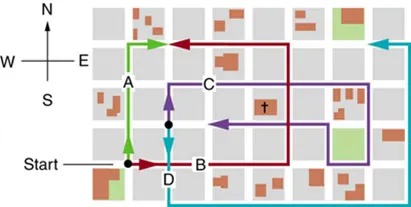
Figure 3.49 The various lines represent paths taken by different people walking in a city. All blocks are 120 m on a side. Image from OpenStax College Physics 2e, CC-BY 4.0
Image Description
The image is a diagram of a city grid with multiple routes marked in different colors. In the top left corner, there is a compass rose indicating the cardinal directions: North (N), East (E), South (S), and West (W).
The city grid is represented by gray squares, which likely signify buildings or blocks, interspersed with some small colored areas that might indicate parks or notable locations. There is a path starting point labeled ‘Start’ at the bottom left.
The routes are marked as follows:
- Green Path: Starts at ‘Start’, moves north to point A, then proceeds further east.
- Blue Path: Begins at ‘Start’, goes east to point D, continues north to B, and then heads east.
- Purple Path: Begins at point D, moves north to B, continues east to C, then travels north and then heads east and finally south.
- Red Path: Starts at point A, moves east to C, and then continues in a loop, cutting through the grid.
The diagram includes various intersections labeled with letters A, B, C, and D, indicating key waypoints along the paths. In the grid’s center, there is a small icon resembling a cross, possibly denoting a church or a significant landmark.
- Find the following for path B in Figure 3.49: (a) the total distance traveled, and (b) the magnitude and direction of the displacement from start to finish.
- Find the north and east components of the displacement for the hikers shown in Figure 3.47.
- Suppose you walk 18.0 m straight west and then 25.0 m straight north. How far are you from your starting point, and what is the compass direction of a line connecting your starting point to your final position? (If you represent the two legs of the walk as vector displacements [latex]\textbf{A}[/latex] and [latex]\textbf{B}[/latex], as in Figure 3.50, then this problem asks you to find their sum [latex]\textbf{R} = \textbf{A} + \textbf{B}[/latex].)
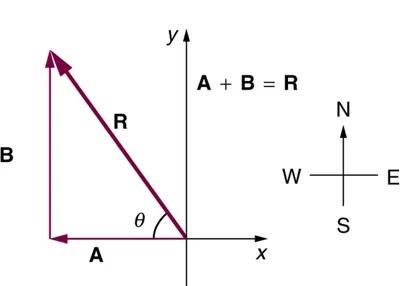
Figure 3.50 The two displacements [latex]\mathbf{A}[/latex] and [latex]\mathbf{B}[/latex] add to give a total displacement [latex]\mathbf{R}[/latex] having magnitude [latex]R[/latex] and direction [latex]\theta[/latex]. Image from OpenStax College Physics 2e, CC-BY 4.0
Image Description
The image depicts a vector diagram with coordinate axes and a compass rose for direction. Here’s a description of the elements:
- Vector Components:
- The vector
Ris represented as a diagonal arrow pointing upwards and to the left, forming the hypotenuse of a right triangle. - The horizontal component
Ais shown as an arrow along thex-axispointing to the right. - The vertical component
Bis an arrow along they-axispointing upwards.
- The vector
- Angle: The angle θ is located between the x-axis and the vector R. It is enclosed within the triangle at the origin.
- Equation: Above the x-axis, the equation “A + B = R” is written to depict how the vector R is the resultant of the vector addition.
- Coordinate Axes:
x-axisis the horizontal axis, andy-axisis the vertical axis, both intersecting at the origin (0,0).
- Compass Rose: On the right side of the image, a compass rose indicates cardinal directions:
N(North) is upwards,S(South) is downwards,E(East) is to the right, andW(West) is to the left.
- Suppose you first walk 12.0 m in a direction [latex]\text{20}º[/latex] west of north and then 20.0 m in a direction [latex]\text{40}.\text{0}º[/latex] south of west. How far are you from your starting point, and what is the compass direction of a line connecting your starting point to your final position? (If you represent the two legs of the walk as vector displacements [latex]\mathbf{A}[/latex] and [latex]\mathbf{B}[/latex], as in Figure 3.51, then this problem finds their sum [latex]\text{R}\textrm{ }=\textrm{ }\text{A}\textrm{ }+\textrm{ }\text{B}[/latex].)
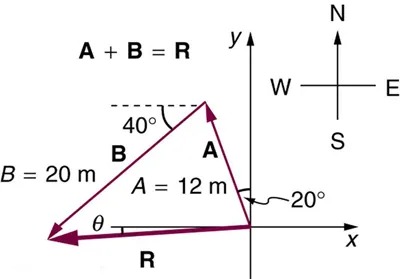
Figure 3.51 Image from OpenStax College Physics 2e, CC-BY 4.0
Image Description
The image shows a vector diagram with two vectors, A and B, and their resultant vector R. The diagram is set on a Cartesian coordinate plane with x and y axes marked. A compass rose is also present, indicating the cardinal directions: North (N), East (E), South (S), and West (W).
– Vector A is represented by an arrow, directed up-right, labeled as 12 meters, making an angle of 20 degrees with the positive x-axis.
– Vector B is represented by another arrow, directed upward and slightly to the left, labeled as 20 meters, making an angle of 40 degrees with Vector A.
– Resultant Vector R is represented as the diagonal of the parallelogram, directed towards the left, pointing downwards from the tip of Vector B to the horizontal component of Vector A.
– The diagram is labeled with the equation `A + B = R`.
– The angle between Vector R and the x-axis is marked as theta (θ).
– An additional directional compass at the top right indicates West and East on the horizontal plane, and North and South on the vertical plane.
- Repeat the problem above, but reverse the order of the two legs of the walk; show that you get the same final result. That is, you first walk leg [latex]\mathbf{B}[/latex], which is 20.0 m in a direction exactly [latex]\text{40}º[/latex] south of west, and then leg [latex]\mathbf{A}[/latex], which is 12.0 m in a direction exactly [latex]\text{20}º[/latex] west of north. (This problem shows that [latex]\mathbf{A} + \mathbf{B} = \mathbf{B} + \mathbf{A}[/latex].)
- (a) Repeat the problem two problems prior, but for the second leg you walk 20.0 m in a direction [latex]\text{40}.\text{0}º[/latex] north of east, (which is equivalent to subtracting [latex]\mathbf{B}[/latex] from [latex]\mathbf{A}[/latex] —that is, finding [latex]\mathbf{R} ' = \mathbf{A} – \mathbf{B}[/latex]). (b) Repeat the problem two problems prior, but now you first walk 20.0 m in a direction [latex]\text{40}.\text{0}º[/latex] east of south (which is equivalent to subtracting [latex]\textbf{A}[/latex] from [latex]\textbf{B}[/latex] —that is, to finding [latex]\textbf{R} ′′ = \textbf{B} - \textbf{A} = - \textbf{R} '[/latex]). Show that this is the case.
- Show that the order of addition of three vectors does not affect their sum. Show this property by choosing any three vectors [latex]\mathbf{A}[/latex], [latex]\mathbf{B}[/latex], and [latex]\mathbf{C}[/latex], all having different lengths and directions. Find the sum [latex]\text{A}\textrm{ }+\textrm{ }\text{B}\textrm{ }+\textrm{ }\text{C}[/latex] then find their sum when added in a different order and show the result is the same. (There are five other orders in which [latex]\mathbf{A}[/latex], [latex]\mathbf{B}[/latex], and [latex]\mathbf{C}[/latex] can be added; choose only one.)
- Show that the sum of the vectors discussed in Example 3.2 gives the result shown in Figure 3.23.
- Find the magnitudes of velocities [latex]v_{\text{A}}[/latex] and [latex]v_{\text{B}}[/latex] in Figure 3.52
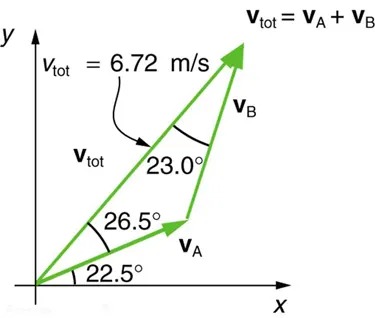
Figure 3.52 The two velocities [latex]\textbf{v}_{\text{A}}[/latex] and [latex]\textbf{v}_{\text{B}}[/latex] add to give a total [latex]\textbf{v}_{\text{tot}}[/latex]. Image from OpenStax College Physics 2e, CC-BY 4.0
Image Description
The image depicts a vector diagram with a coordinate system labeled with x and y axes. There are three vectors shown:
- Vector vA: Starts at the origin and is marked at an angle of 22.5° above the x-axis.
- Vector vB: Starts at the tip of vector vA and is marked at an angle of 26.5° relative to vector vA.
- Vector vtot: Starts at the origin and follows the combined path of vectors vA and vB, marked at an angle of 23.0° from the resultant vector vA and labeled with a magnitude of 6.72 m/s.
The equation shown in the image is vtot = vA + vB, indicating that vtot is the resultant vector from adding vectors vA and vB.
- Find the components of [latex]v_{\text{tot}}[/latex] along the x- and y-axes in Figure 3.52.
- Find the components of [latex]v_{\text{tot}}[/latex] along a set of perpendicular axes rotated [latex]\text{30}º[/latex] counterclockwise relative to those in Figure 3.52.
3.3 Vector Addition and Subtraction: Analytical Methods
- Find the following for path C in Figure 3.53: (a) the total distance traveled and (b) the magnitude and direction of the displacement from start to finish. In this part of the problem, explicitly show how you follow the steps of the analytical method of vector addition.
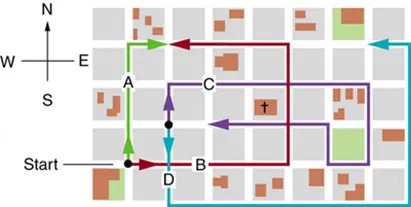
Figure 3.53 The various lines represent paths taken by different people walking in a city. All blocks are 120 m on a side. Image from OpenStax College Physics 2e, CC-BY 4.0
Image Description
The image is a map illustrating various routes through a grid-like layout, with directions marked by colored arrows. In the top left corner, a compass rose indicates directions: North (up), South (down), East (right), and West (left).
The map background consists of blocks representing a city layout, with gray squares for buildings and smaller colored shapes representing different areas within the blocks. Some blocks have green patches possibly indicating parks or open spaces, and others have smaller brown patches suggesting smaller buildings or houses.
The path details are as follows:
- Green Path: Starting from the bottom left marked “Start,” it heads north to point A.
- Blue Path: Starts at point A, moves east, then south to point B, and continues to the east, eventually turning north.
- Purple Path: Begins at point B, moves north to point C, then heads east and loops around to connect back towards the south.
- Red Path: Initiates at point A, heading east through the center of the map, turns south to D, and makes a loop back at point C, then drives east towards the edge of the map.
A cross symbol is shown near the center, possibly indicating a significant landmark or point of interest.
- Find the following for path D in Figure 3.53: (a) the total distance traveled and (b) the magnitude and direction of the displacement from start to finish. In this part of the problem, explicitly show how you follow the steps of the analytical method of vector addition.
- Find the north and east components of the displacement from San Francisco to Sacramento shown in Figure 3.54.
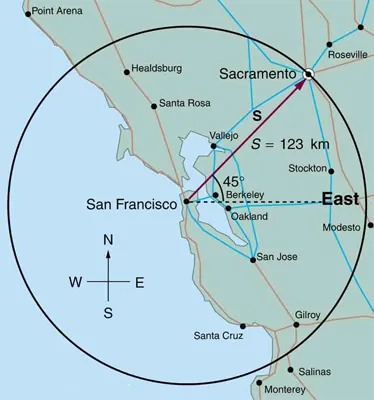
Figure 3.54 Image from OpenStax College Physics 2e, CC-BY 4.0
Image Description
The image is a map highlighting a geographical area in California, including cities and various geographical markers. Key features include:
- A large circle is drawn, centered on San Francisco, covering nearby regions.
- The circle indicates a radius labeled as S = 123 km.
- The map highlights a line from San Francisco to Sacramento, forming an angle marked as 45° with the horizontal line labeled “East”.
- Major cities marked on the map include San Francisco, Sacramento, Vallejo, Oakland, Berkeley, San Jose, Santa Cruz, and Monterey.
- Other minor cities and towns such as Healdsburg, Santa Rosa, Stockton, Modesto, Gilroy, and Salinas are also marked.
- A north-south-east-west directional compass is located in the lower left corner of the map for orientation.
- Major roads and rivers are illustrated in blue and black lines, indicating connections between different cities.
The map is a representation of the San Francisco Bay Area extending towards Sacramento, showing major transportation and geographical directions.
- Solve the following problem using analytical techniques: Suppose you walk 18.0 m straight west and then 25.0 m straight north. How far are you from your starting point, and what is the compass direction of a line connecting your starting point to your final position? (If you represent the two legs of the walk as vector displacements [latex]\mathbf{A}[/latex] and [latex]\mathbf{B}[/latex], as in Figure 3.55, then this problem asks you to find their sum [latex]\mathbf{R} = \mathbf{A} + \mathbf{B}[/latex].)
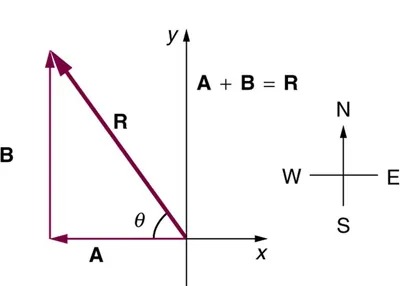
Figure 3.55 The two displacements [latex]\mathbf{A}[/latex] and [latex]\mathbf{B}[/latex] add to give a total displacement [latex]\mathbf{R}[/latex] having magnitude [latex]R[/latex] and direction [latex]\theta[/latex]. Image from OpenStax College Physics 2e, CC-BY 4.0
Image Description
The image is a diagram illustrating vector addition. It features a right triangle formed by two vectors and their resultant:
- Vector A is a horizontal line pointing to the right, along the x-axis.
- Vector B is a vertical line pointing upwards, along the y-axis.
- The hypotenuse, labeled R, is a vector combining A and B, pointing diagonally upward and to the right, creating an angle labeled as θ with the x-axis.
The relationship is expressed as “A + B = R”.
To the right of the triangle, there is a compass rose indicating directions: N (North) pointing upwards, S (South) pointing downwards, E (East) pointing to the right, and W (West) pointing to the left.
Note that you can also solve this graphically. Discuss why the analytical technique for solving this problem is potentially more accurate than the graphical technique.
- Repeat Exercise 3.16 using analytical techniques, but reverse the order of the two legs of the walk and show that you get the same final result. (This problem shows that adding them in reverse order gives the same result—that is,
[latex]\textbf{B }+\textbf{ A }=\textbf{ A }+\textbf{ B}[/latex].) Discuss how taking another path to reach the same point might help to overcome an obstacle blocking your other path. - You drive [latex]7 . \text{50 km}[/latex] in a straight line in a direction [latex]15º[/latex] east of north. (a) Find the distances you would have to drive straight east and then straight north to arrive at the same point. (This determination is equivalent to find the components of the displacement along the east and north directions.) (b) Show that you still arrive at the same point if the east and north legs are reversed in order.
- Do Exercise 3.16 again using analytical techniques and change the second leg of the walk to [latex]\text{25}.\text{0 m}[/latex] straight south. (This is equivalent to subtracting [latex]\mathbf{B}[/latex] from [latex]\mathbf{A}[/latex] —that is, finding
[latex]\textbf{R} ' = \textbf{A }–\textbf{ B}[/latex]) (b) Repeat again, but now you first walk [latex]\text{25} . \text{0 m}[/latex] north and then [latex]\text{18} . \text{0 m}[/latex] east. (This is equivalent to subtract [latex]\mathbf{A}[/latex] from [latex]\mathbf{B}[/latex] —that is, to find [latex]\mathbf{A} = \mathbf{B} + \mathbf{C}[/latex]. Is that consistent with your result?) - A new landowner has a triangular piece of flat land she wishes to fence. Starting at the west corner, she measures the first side to be 80.0 m long and the next to be 105 m. These sides are represented as displacement vectors [latex]\mathbf{A}[/latex] from [latex]\mathbf{B}[/latex] in Figure 3.56. She then correctly calculates the length and orientation of the third side [latex]\text{C}[/latex]. What is her result?
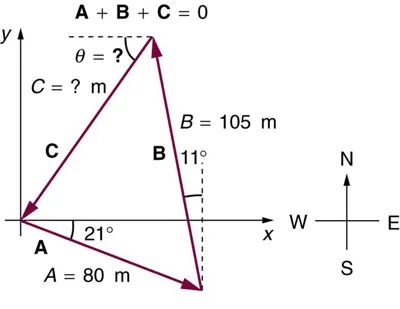
Figure 3.56 Image from OpenStax College Physics 2e, CC-BY 4.0
Image Description
The image depicts a vector diagram involving three vectors, A, B, and C, that form a closed triangle, illustrating vector addition where A + B + C = 0.
– Vectors:
– A: Labeled as 80 meters, positioned along the x-axis at an angle of 21 degrees from the horizontal.
– B: Labeled as 105 meters, extends upwards from vector A, making an 11-degree angle with the vertical.
– C: Listed with an unknown magnitude (? m) and unknown angle (θ), closing the triangle with an upward left diagonal direction towards the y-axis.
– Coordinate System:
– An x-y coordinate plane is shown with the x-axis aligned horizontally and the y-axis vertically. There is also a compass indicating directions: North (N) up, South (S) down, East (E) to the right, and West (W) to the left.
– Arrows indicate the direction of vectors, with vector C completing the triangle as it angles back to the start of vector A, ensuring the summation equals zero.
- You fly [latex]\text{32} . \text{0 km}[/latex] in a straight line in still air in the direction [latex]35.0º[/latex] south of west. (a) Find the distances you would have to fly straight south and then straight west to arrive at the same point. (This determination is equivalent to finding the components of the displacement along the south and west directions.) (b) Find the distances you would have to fly first in a direction [latex]45.0º[/latex] south of west and then in a direction [latex]45.0º[/latex] west of north. These are the components of the displacement along a different set of axes—one rotated [latex]45º[/latex].
- A farmer wants to fence off a four-sided plot of flat land. They measure the first three sides, shown as [latex]\mathbf{A} ,[/latex]
[latex]\mathbf{B} ,[/latex] and [latex]\mathbf{C}[/latex] in Figure 3.57, and then correctly calculate the length and orientation of the fourth side [latex]\mathbf{D}[/latex].
What is their result?
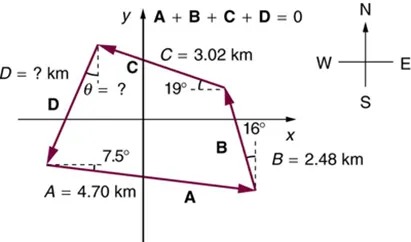
Figure 3.57 Image from OpenStax College Physics 2e, CC-BY 4.0
Image Description
The image depicts a vector diagram on a coordinate plane with four vectors labeled as A, B, C, and D, forming a closed polygonal path.
– Vector A is directed mostly leftwards and slightly upwards with a magnitude of 4.70 km, at an angle of 7.5° from the negative x-axis.
– Vector B is directed rightwards and slightly upwards with a magnitude of 2.48 km, at an angle of 16° from the positive x-axis.
– Vector C is directed leftwards and slightly downwards with a magnitude of 3.02 km, at an angle of 19° from the negative x-axis.
– Vector D completes the polygon, though its magnitude and angle (θ) are unspecified, with the notation indicating both are unknown.
The sum of the vectors is given as \( A + B + C + D = 0 \), indicating the path forms a closed loop.
There is also a compass rose in the top right corner of the image, indicating the cardinal directions: North (N), East (E), South (S), and West (W).
The coordinate system includes both x and y axes, with positive directions indicated.
- In an attempt to escape his island, Gilligan builds a raft and sets to sea. The wind shifts a great deal during the day, and he is blown along the following straight lines: [latex]2 . \text{50 km}[/latex] [latex]45.0º[/latex] north of west; then [latex]4 . \text{70 km}[/latex] [latex]60.0º[/latex] south of east; then [latex]1.30 \text{ km}[/latex] [latex]25.0º[/latex] south of west; then [latex]5 . \text{10 km}[/latex] straight east; then [latex]1.70 \text{ km}[/latex] [latex]5.00º[/latex] east of north; then [latex]7 . \text{20 km}[/latex] [latex]55.0º[/latex] south of west; and finally [latex]2 . \text{80 km}[/latex] [latex]10.0º[/latex] north of east. What is his final position relative to the island?
- Suppose a pilot flies [latex]\text{40} . \text{0 km}[/latex] in a direction [latex]\text{60}º[/latex] north of east and then flies [latex]\text{30} . \text{0 km}[/latex] in a direction [latex]\text{15}º[/latex] north of east as shown in Figure 3.58. Find her total distance [latex]R[/latex] from the starting point and the direction [latex]\theta[/latex] of the straight-line path to the final position. Discuss qualitatively how this flight would be altered by a wind from the north and how the effect of the wind would depend on both wind speed and the speed of the plane relative to the air mass.
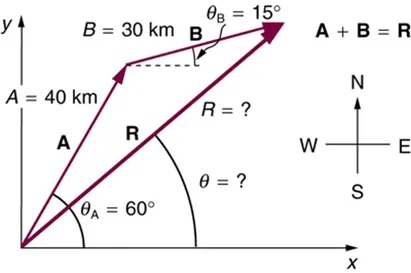
Figure 3.58 Image from OpenStax College Physics 2e, CC-BY 4.0
Image Description
The image is a vector diagram showing the addition of two vectors, A and B, resulting in vector R. Here’s a detailed description:
- Vector A is depicted with an arrow pointing upwards and slightly to the left, with a magnitude labeled as “40 km”. It makes an angle, θA, of 60 degrees with the horizontal axis.
- Vector B is represented with an arrow pointing upwards and slightly to the right, with a magnitude labeled as “30 km”. It makes an angle, θB, of 15 degrees above the horizontal line marked for Vector A.
- The resultant vector R is shown as a diagonal arrow pointing to the right. The angle θ and the magnitude R are unknown and labeled as “R = ?” and “θ = ?”.
- The vectors are arranged in a vector addition format where A + B = R.
- The coordinate plane has x and y axes, with a compass rose on the right denoting directions as North (N), South (S), East (E), and West (W).
3.4 Projectile Motion
- A projectile is launched at ground level with an initial speed of 50.0 m/s at an angle of [latex]30.0º[/latex] above the horizontal. It strikes a target above the ground 3.00 seconds later. What are the [latex]x[/latex] and [latex]y[/latex] distances from where the projectile was launched to where it lands?
- A ball is kicked with an initial velocity of 16 m/s in the horizontal direction and 12 m/s in the vertical direction. (a) At what speed does the ball hit the ground? (b) For how long does the ball remain in the air? (c)What maximum height is attained by the ball?
- A ball is thrown horizontally from the top of a 60.0-m building and lands 100.0 m from the base of the building. Ignore air resistance. (a) How long is the ball in the air? (b) What must have been the initial horizontal component of the velocity? (c) What is the vertical component of the velocity just before the ball hits the ground? (d) What is the velocity (including both the horizontal and vertical components) of the ball just before it hits the ground?
- (a) A daredevil is attempting to jump his motorcycle over a line of buses parked end to end by driving up a [latex]\text{32}º[/latex] ramp at a speed of [latex]\text{40} . \text{0}\textrm{ }\text{m}/\text{s}\textrm{ } \left(\right. \text{144}\textrm{ }\text{km}/\text{h} \left.\right)[/latex]. How many buses can he clear if the top of the takeoff ramp is at the same height as the bus tops and the buses are 20.0 m long? (b) Discuss what your answer implies about the margin of error in this act—that is, consider how much greater the range is than the horizontal distance he must travel to miss the end of the last bus. (Neglect air resistance.)
- An archer shoots an arrow at a 75.0 m distant target; the bull’s-eye of the target is at same height as the release height of the arrow. (a) At what angle must the arrow be released to hit the bull’s-eye if its initial speed is 35.0 m/s? In this part of the problem, explicitly show how you follow the steps involved in solving projectile motion problems. (b) There is a large tree halfway between the archer and the target with an overhanging horizontal branch 3.50 m above the release height of the arrow. Will the arrow go over or under the branch?
- A rugby player passes the ball 7.00 m across the field, where it is caught at the same height as it left his hand. (a) At what angle was the ball thrown if its initial speed was 12.0 m/s, assuming that the smaller of the two possible angles was used? (b) What other angle gives the same range, and why would it not be used? (c) How long did this pass take?
- Verify the ranges for the projectiles in Figure 3.38(a) for [latex]\theta = \text{45}º[/latex] and the given initial velocities.
- Verify the ranges shown for the projectiles in Figure 3.38(b) for an initial velocity of 50 m/s at the given initial angles.
- The cannon on a battleship can fire a shell a maximum distance of 32.0 km. (a) Calculate the initial velocity of the shell. (b) What maximum height does it reach? (At its highest, the shell is above 60% of the atmosphere—but air resistance is not really negligible as assumed to make this problem easier.) (c) The ocean is not flat, because the Earth is curved. Assume that the radius of the Earth is [latex]6 . \text{37} \times \text{10}^{3} \text{ km}[/latex]. How many meters lower will its surface be 32.0 km from the ship along a horizontal line parallel to the surface at the ship? Does your answer imply that error introduced by the assumption of a flat Earth in projectile motion is significant here?
- An arrow is shot from a height of 1.5 m toward a cliff of height [latex]H[/latex]. It is shot with a velocity of 30 m/s at an angle of [latex]\text{60}º[/latex] above the horizontal. It lands on the top edge of the cliff 4.0 s later. (a) What is the height of the cliff? (b) What is the maximum height reached by the arrow along its trajectory? (c) What is the arrow’s impact speed just before hitting the cliff?
- In the standing broad jump, one squats and then pushes off with the legs to see how far one can jump. Suppose the extension of the legs from the crouch position is 0.600 m and the acceleration achieved from this position is 1.25 times the acceleration due to gravity, [latex]g[/latex]. How far can they jump? State your assumptions. (Increased range can be achieved by swinging the arms in the direction of the jump.)
- The world long jump record is 8.95 m (Mike Powell, USA, 1991). Treated as a projectile, what is the maximum range obtainable by a person if he has a take-off speed of 9.5 m/s? State your assumptions.
- Serving at a speed of 170 km/h, a tennis player hits the ball at a height of 2.5 m and an angle [latex]\theta[/latex] below the horizontal. The base line is 11.9 m from the net, which is 0.91 m high. What is the angle [latex]\theta[/latex] such that the ball just crosses the net? Will the ball land in the service box, whose service line is 6.40 m from the net?
- A football quarterback is moving straight backward at a speed of 2.00 m/s when he throws a pass to a player 18.0 m straight downfield. (a) If the ball is thrown at an angle of [latex]\text{25}º[/latex] relative to the ground and is caught at the same height as it is released, what is its initial speed relative to the ground? (b) How long does it take to get to the receiver? (c) What is its maximum height above its point of release?
- Gun sights are adjusted to aim high to compensate for the effect of gravity, effectively making the gun accurate only for a specific range. (a) If a gun is sighted to hit targets that are at the same height as the gun and 100.0 m away, how low will the bullet hit if aimed directly at a target 150.0 m away? The muzzle velocity of the bullet is 275 m/s. (b) Discuss qualitatively how a larger muzzle velocity would affect this problem and what would be the effect of air resistance.
- An eagle is flying horizontally at a speed of 3.00 m/s when the fish in her talons wiggles loose and falls into the lake 5.00 m below. Calculate the velocity of the fish relative to the water when it hits the water.
- An owl is carrying a mouse to the chicks in its nest. Its position at that time is 4.00 m west and 12.0 m above the center of the 30.0 cm diameter nest. The owl is flying east at 3.50 m/s at an angle 30.0º below the horizontal when it accidentally drops the mouse. Is the owl lucky enough to have the mouse hit the nest? To answer this question, calculate the horizontal position of the mouse when it has fallen 12.0 m.
- Suppose a soccer player kicks the ball from a distance 30 m toward the goal. Find the initial speed of the ball if it just passes over the goal, 2.4 m above the ground, given the initial direction to be [latex]\text{40}º[/latex] above the horizontal.
- Can a goalkeeper at her/ his goal kick a soccer ball into the opponent’s goal without the ball touching the ground? The distance will be about 95 m. A goalkeeper can give the ball a speed of 30 m/s.
- The free throw line in basketball is 4.57 m (15 ft) from the basket, which is 3.05 m (10 ft) above the floor. A player standing on the free throw line throws the ball with an initial speed of 8.15 m/s, releasing it at a height of 2.44 m (8 ft) above the floor. At what angle above the horizontal must the ball be thrown to exactly hit the basket? Note that most players will use a large initial angle rather than a flat shot because it allows for a larger margin of error. Explicitly show how you follow the steps involved in solving projectile motion problems.
- In 2007, Michael Carter (U.S.) set a world record in the shot put with a throw of 24.77 m. What was the initial speed of the shot if he released it at a height of 2.10 m and threw it at an angle of [latex]38.0º[/latex] above the horizontal? (Although the maximum distance for a projectile on level ground is achieved at [latex]\text{45}º[/latex] when air resistance is neglected, the actual angle to achieve maximum range is smaller; thus, [latex]\text{38}º[/latex] will give a longer range than [latex]\text{45}º[/latex] in the shot put.)
- A basketball player is running at [latex]5 . \text{00}\textrm{ }\text{m}/\text{s}[/latex] directly toward the basket when he jumps into the air to dunk the ball. He maintains his horizontal velocity. (a) What vertical velocity does he need to rise 0.750 m above the floor? (b) How far from the basket (measured in the horizontal direction) must he start his jump to reach his maximum height at the same time as he reaches the basket?
- A football player punts the ball at a [latex]45.0º[/latex] angle. Without an effect from the wind, the ball would travel 60.0 m horizontally. (a) What is the initial speed of the ball? (b) When the ball is near its maximum height it experiences a brief gust of wind that reduces its horizontal velocity by 1.50 m/s. What distance does the ball travel horizontally?
- Prove that the trajectory of a projectile is parabolic, having the form [latex]y = \text{ax} + \text{bx}^{2}[/latex]. To obtain this expression, solve the equation [latex]x = v_{0 x} t[/latex] for [latex]t[/latex] and substitute it into the expression for [latex]y = v_{0 y} t – \left(\right. 1 / 2 \left.\right) \text{gt}^{2}[/latex] (These equations describe the [latex]x[/latex] and [latex]y[/latex] positions of a projectile that starts at the origin.) You should obtain an equation of the form [latex]y = \text{ax} + \text{bx}^{2}[/latex] where [latex]a[/latex] and [latex]b[/latex] are constants.
- Derive [latex]R = \frac{v_{0}^{2} \text{sin} 2θ_{0}}{g}[/latex] for the range of a projectile on level ground by finding the time [latex]t[/latex] at which [latex]y[/latex] becomes zero and substituting this value of [latex]t[/latex] into the expression for [latex]x - x_{0}[/latex], noting that [latex]R = x - x_{0}[/latex]
- Unreasonable Results (a) Find the maximum range of a super cannon that has a muzzle velocity of 4.0 km/s. (b) What is unreasonable about the range you found? (c) Is the premise unreasonable or is the available equation inapplicable? Explain your answer. (d) If such a muzzle velocity could be obtained, discuss the effects of air resistance, thinning air with altitude, and the curvature of the Earth on the range of the super cannon.
- Construct Your Own Problem Consider a ball tossed over a fence. Construct a problem in which you calculate the ball’s needed initial velocity to just clear the fence. Among the things to determine are; the height of the fence, the distance to the fence from the point of release of the ball, and the height at which the ball is released. You should also consider whether it is possible to choose the initial speed for the ball and just calculate the angle at which it is thrown. Also examine the possibility of multiple solutions given the distances and heights you have chosen.
3.5 Addition of Velocities
- Bryan Allen pedaled a human-powered aircraft across the English Channel from the cliffs of Dover to Cap Gris-Nez on June 12, 1979. (a) He flew for 169 min at an average velocity of 3.53 m/s in a direction [latex]\text{45}º[/latex] south of east. What was his total displacement? (b) Allen encountered a headwind averaging 2.00 m/s almost precisely in the opposite direction of his motion relative to the Earth. What was his average velocity relative to the air? (c) What was his total displacement relative to the air mass?
- A seagull flies at a velocity of 9.00 m/s straight into the wind. (a) If it takes the bird 20.0 min to travel 6.00 km relative to the Earth, what is the velocity of the wind? (b) If the bird turns around and flies with the wind, how long will he take to return 6.00 km? (c) Discuss how the wind affects the total round-trip time compared to what it would be with no wind.
- Near the end of a marathon race, the first two runners are separated by a distance of 45.0 m. The front runner has a velocity of 3.50 m/s, and the second a velocity of 4.20 m/s. (a) What is the velocity of the second runner relative to the first? (b) If the front runner is 250 m from the finish line, who will win the race, assuming they run at constant velocity? (c) What distance ahead will the winner be when she crosses the finish line?
- Verify that the coin dropped by the airline passenger in the Example 3.8 travels 144 m horizontally while falling 1.50 m in the frame of reference of the Earth.
- A football quarterback is moving straight backward at a speed of 2.00 m/s when he throws a pass to a player 18.0 m straight downfield. The ball is thrown at an angle of [latex]25.0º[/latex] relative to the ground and is caught at the same height as it is released. What is the initial velocity of the ball relative to the quarterback ?
- A ship sets sail from Rotterdam, The Netherlands, heading due north at 7.00 m/s relative to the water. The local ocean current is 1.50 m/s in a direction [latex]\text{40}.\text{0}º[/latex] north of east. What is the velocity of the ship relative to the Earth?
- (a) A jet airplane flying from Darwin, Australia, has an air speed of 260 m/s in a direction [latex]5.0º[/latex] south of west. It is in the jet stream, which is blowing at 35.0 m/s in a direction [latex]15º[/latex] south of east. What is the velocity of the airplane relative to the Earth? (b) Discuss whether your answers are consistent with your expectations for the effect of the wind on the plane’s path.
- (a) In what direction would the ship in Exercise 3.57 have to travel in order to have a velocity straight north relative to the Earth, assuming its speed relative to the water remains [latex]7 . \text{00 m}/\text{s}[/latex]? (b) What would its speed be relative to the Earth?
- (a) Another airplane is flying in a jet stream that is blowing at 45.0 m/s in a direction [latex]\text{20}º[/latex] south of east (as in Exercise 3.58). Its direction of motion relative to the Earth is [latex]45.0º[/latex] south of west, while its direction of travel relative to the air is [latex]5.00º[/latex] south of west. What is the airplane’s speed relative to the air mass? (b) What is the airplane’s speed relative to the Earth?
- A sandal is dropped from the top of a 15.0-m-high mast on a ship moving at 1.75 m/s due south. Calculate the velocity of the sandal when it hits the deck of the ship: (a) relative to the ship and (b) relative to a stationary observer on shore. (c) Discuss how the answers give a consistent result for the position at which the sandal hits the deck.
- The velocity of the wind relative to the water is crucial to sailboats. Suppose a sailboat is in an ocean current that has a velocity of 2.20 m/s in a direction [latex]30.0º[/latex] east of north relative to the Earth. It encounters a wind that has a velocity of 4.50 m/s in a direction of [latex]50.0º[/latex] south of west relative to the Earth. What is the velocity of the wind relative to the water?
- The great astronomer Edwin Hubble discovered that all distant galaxies are receding from our Milky Way Galaxy with velocities proportional to their distances. It appears to an observer on the Earth that we are at the center of an expanding universe. Figure 3.59 illustrates this for five galaxies lying along a straight line, with the Milky Way Galaxy at the center. Using the data from the figure, calculate the velocities: (a) relative to galaxy 2 and (b) relative to galaxy 5. The results mean that observers on all galaxies will see themselves at the center of the expanding universe, and they would likely be aware of relative velocities, concluding that it is not possible to locate the center of expansion with the given information.

Figure 3.59 Five galaxies on a straight line, showing their distances and velocities relative to the Milky Way (MW) Galaxy. The distances are in millions of light years (Mly), where a light year is the distance light travels in one year. The velocities are nearly proportional to the distances. The sizes of the galaxies are greatly exaggerated; an average galaxy is about 0.1 Mly across. Image from OpenStax College Physics 2e, CC-BY 4.0
Image Description
The image shows five different galaxies, each labeled with a name, distance, and velocity. The galaxies are represented with illustrations and are accompanied by green arrows indicating direction.
– Galaxy 1: Located 300 million light-years (Mly) away. Its velocity is indicated as \( v_1 = -4500 \) km/s, suggesting it’s moving towards us.
– Galaxy 2: Located 150 Mly away with a velocity of \( v_2 = -2200 \) km/s, also moving towards us.
– Galaxy 3: Labeled “MW” (presumably the Milky Way), no distance provided. No velocity is shown.
– Galaxy 4: 190 Mly away, with a velocity of \( v_4 = 2830 \) km/s, moving away.
– Galaxy 5: 450 Mly away with a velocity of \( v_5 = 6700 \) km/s, moving away.
An HTML table can be used to summarize the information:
| Galaxy | Distance | Velocity |
|---|---|---|
| Galaxy 1 | 300 Mly | -4500 km/s |
| Galaxy 2 | 150 Mly | -2200 km/s |
| Galaxy 3 (MW) | — | — |
| Galaxy 4 | 190 Mly | 2830 km/s |
| Galaxy 5 | 450 Mly | 6700 km/s |
The light-years (Mly) indicate distance, and the velocity values in km/s indicate the speed and direction relative to Earth, with negative values showing approaching motion.
- (a) Use the distance and velocity data in Figure 3.59 to find the rate of expansion as a function of distance. (b) If you extrapolate back in time, how long ago would all of the galaxies have been at approximately the same position? The two parts of this problem give you some idea of how the Hubble constant for universal expansion and the time back to the Big Bang are determined, respectively.
- An athlete crosses a 25-m-wide river by swimming perpendicular to the water current at a speed of 0.5 m/s relative to the water. They reach the opposite side at a distance 40 m downstream from the starting point. How fast is the water in the river flowing with respect to the ground? What is the speed of the swimmer with respect to a friend at rest on the ground?
- A ship sailing in the Gulf Stream is heading [latex]25.0º[/latex] west of north at a speed of 4.00 m/s relative to the water. Its velocity relative to the Earth is [latex]4.80 m/s[/latex] [latex]5.00º[/latex] west of north. What is the velocity of the Gulf Stream? (The velocity obtained is typical for the Gulf Stream a few hundred kilometers off the east coast of the United States.)
- An ice hockey player is moving at 8.00 m/s when they hit the puck toward the goal. The speed of the puck relative to the player is 29.0 m/s. The line between the center of the goal and the player makes a [latex]90.0º[/latex] angle relative to their path as shown in Figure 3.60. What angle must the puck’s velocity make relative to the player (in their frame of reference) to hit the center of the goal?
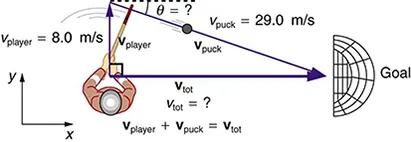
Figure 3.60 An ice hockey player moving across the rink must shoot backward to give the puck a velocity toward the goal. Image from OpenStax College Physics 2e, CC-BY 4.0
Image Description
The image is a diagram illustrating the trajectory and velocity components involved in a hockey puck being shot towards a goal. Here is a detailed description:
– Player: Positioned on the left side, facing the right. The player is holding a hockey stick.
– Vector Labels:
– \( v_{\text{player}} \): 8.0 m/s, shown as a purple arrow pointing to the right, indicating the player’s movement direction.
– \( v_{\text{puck}} \): 29.0 m/s, shown as a diagonal purple arrow pointing towards the goal from the puck’s initial position.
– \( \theta = ? \): Angle of the puck’s path relative to the horizontal direction, marked at the junction of the player’s direction and the puck’s path.
– \( v_{\text{tot}} = ? \): The resulting velocity of the puck after being hit, pointing towards the goal.
– The equation \( v_{\text{player}} + v_{\text{puck}} = v_{\text{tot}} \) is written, explaining the relationship between velocities.
– Axis:
– The diagram includes an x and y-axis on the lower left side, with x pointing right (horizontal) and y pointing up (vertical).
– Goal: Illustrated on the right with a net pattern and labeled “Goal.”
The diagram is meant to illustrate the physics of the puck’s movement and the calculation of its total velocity when combining the player’s velocity with the puck’s velocity.
- Unreasonable Results Suppose you wish to shoot supplies straight up to astronauts in an orbit 36,000 km above the surface of the Earth. (a) At what velocity must the supplies be launched? (b) What is unreasonable about this velocity? (c) Is there a problem with the relative velocity between the supplies and the astronauts when the supplies reach their maximum height? (d) Is the premise unreasonable or is the available equation inapplicable? Explain your answer.
- Unreasonable Results A commercial airplane has an air speed of [latex]\text{280}\textrm{ }\text{m}/\text{s}[/latex] due east and flies with a strong tailwind. It travels 3000 km in a direction [latex]5º[/latex] south of east in 1.50 h. (a) What was the velocity of the plane relative to the ground? (b) Calculate the magnitude and direction of the tailwind’s velocity. (c) What is unreasonable about both of these velocities? (d) Which premise is unreasonable?
- Construct Your Own Problem Consider an airplane headed for a runway in a cross wind. Construct a problem in which you calculate the angle the airplane must fly relative to the air mass in order to have a velocity parallel to the runway. Among the things to consider are the direction of the runway, the wind speed and direction (its velocity) and the speed of the plane relative to the air mass. Also calculate the speed of the airplane relative to the ground. Discuss any last minute maneuvers the pilot might have to perform in order for the plane to land with its wheels pointing straight down the runway.
- Critical Thinking Two identical spring-loaded launchers are fixed to the end of a table. Launcher A is inclined [latex]40º[/latex] above the horizontal and launcher B is inclined [latex]50º[/latex] above the horizontal. (a) Which of these launchers will fire the ball the greatest vertical height above the launcher before it crashes into the ground? (b) Based on experimental data, an equation that fits the data is suggested for the vertical height above the launcher, y, which may not be correct: [latex]y = K V_{0} ^{2} sin \theta[/latex], where K is a constant with appropriate units, [latex]V_{0}[/latex] is the initial velocity of the launcher, and [latex]\theta[/latex] is the angle relative to the x-axis of the launcher. Is this equation consistent with your answer from part a? Explain why or why not. Does this equation make sense? Explain why or why not. (c) Graph the magnitude of the velocity vs. vertical height for both launcher A and B.

